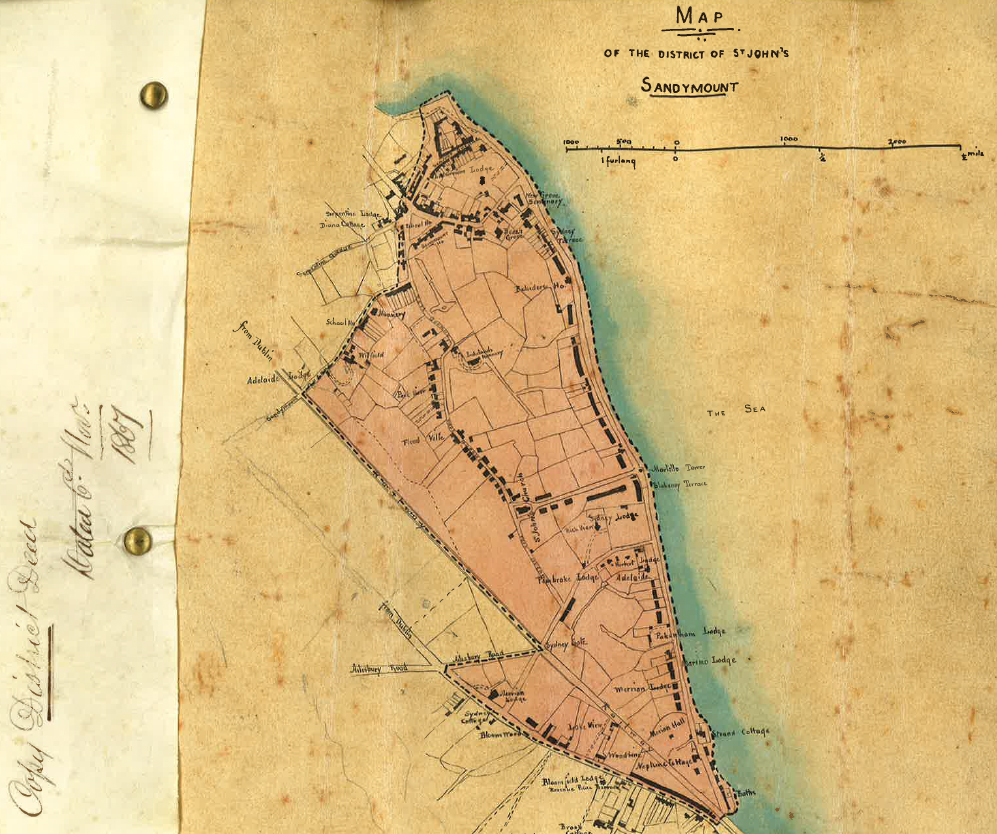The Unique Story of the Church of St John the Evangelist, Dublin, in the Nineteenth Century
In 2019, the RCB Library has received numerous invaluable items to augment the already substantial collection held for St John the Evangelist, Sandymount. Of particular interest was one document, with an attached map, outlining the designation of parochial district boundaries, dated 6th November 1867.
St John the Evangelist, Sandymount, is somewhat unique in the Church of Ireland as it was one of the few within the Church that participated in the Catholic Revival movement which would later become known as the Tractarian Movement. Although the Tractarian Movement would have a particularly significant contribution to the Church of England, reemphasizing as it did the Patristic and Catholic nature of that Church, the political atmosphere in Ireland during the 19th century meant that its influence was not as great. Another significant difference is that St John’s is a trustee church, which meant that it was an ‘estate church’ with an independent liturgy, and one that was financed independently. Another unique aspect of St John’s is the existence of the Community of St John the Evangelist, the first religious order of Anglican nuns in Ireland. The RCB Library has an extensive archival repository for the Community, the hand-list of which you can view here: http://bit.ly/2qCTEgX

The church was originally designed as a chapel-of-ease for the parish of Donnybrook and construction began in the 1840s on lands donated by Sidney Herbert (1810-1861), first Baron Herbert of Lea (and friend of Florence Nightingale); it was opened for divine service on Palm Sunday, 24th March 1850. By 1867, the need was felt to determine in explicit terms the parochial boundaries that pertained to St John’s, and it is with this in mind that the letter and map was produced. It is interesting to note that the purpose of the map and the accompanying letter appears not simply to outline the parochial district, but also to remind the ‘incumbent or curate’ of his duties, namely that of ‘the tithes of baptism, confirmation and the Churching of women and the Holy sacraments of the Lord’s Supper shall be solemnized or performed in the said church called the church of Saint John the Evangelist, Sandymount’.
A detailed hand-list of the collection in the Library for St John the Evangelist, Sandymount, can be viewed by clicking here: http://bit.ly/2NpF8RJ